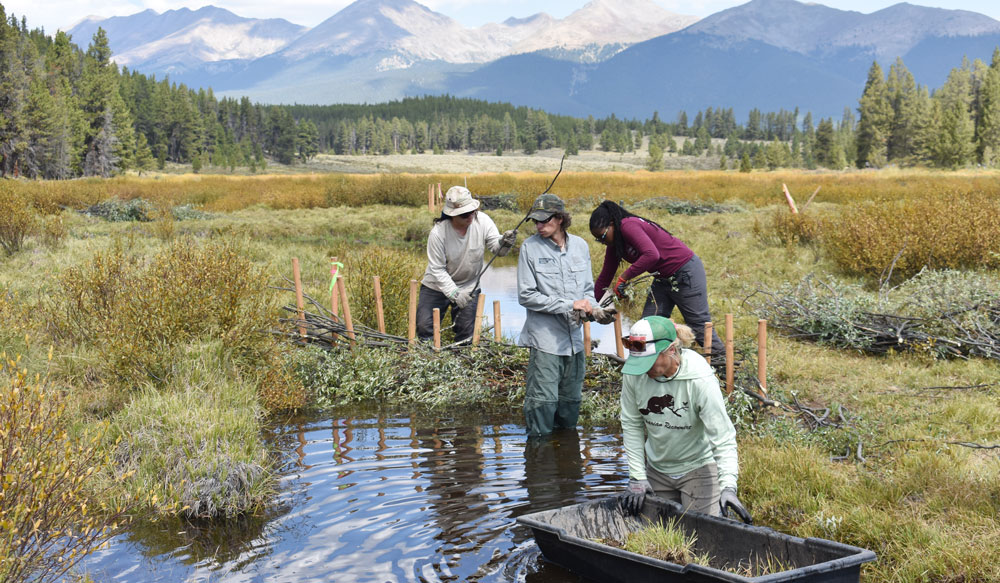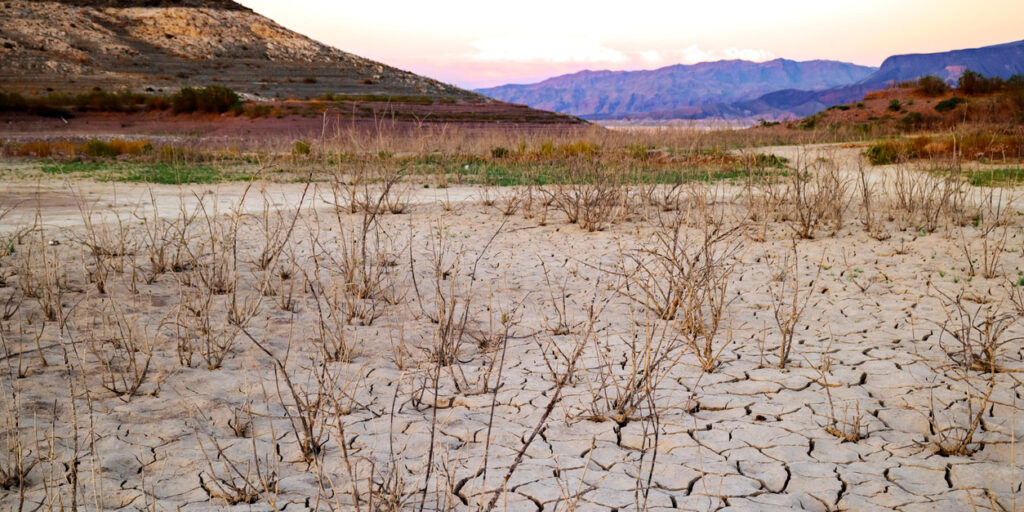
Mimicking beaver activity, volunteers have been working for weeks in Colorado’s high country. A grant from Forever Our Rivers helped Crested Butte’s High Country Conservation Advocates recruit 55 energetic volunteers who helped wetland ecologists build more than 70 beaver mimicry structures at the headwaters of the Taylor River.
Students from Western Colorado University joined as well to participate in academic workshops centered around low-tech process-based restoration methods. Using sod, willows and conifers sourced on-site, these natural dams attenuate spring runoff which can contribute to later season flows. This was the second year of a multi-year collaborative effort located in the headwaters of the Gunnison River along Trail Creek in Taylor Park. The team, which includes the US Forest Service, Colorado Parks & Wildlife, the National Forest Foundation and Gunnison County, was very pleased to see that two beavers have already returned to the valley, improving upon human-built beaver mimicry structures that were constructed last season.
By partnering with beaver to restore these natural ecosystems, the project aims to improve watershed and landscape-scale resilience to drought, flood and wildfire in the face of climate change. Beaver ponds not only store carbon and recharge the aquifer, they provide critical habitat for aquatic and terrestrial wildlife. “This project has had an immediate, positive impact”, said Eli Smith, stewardship director. Due to the effective impact of volunteers, restoration goals were met before the anticipated end date.
The Colorado River: Struggling to Keep the Lifeline Flowing

Everyone needs fresh water—and rivers are the lifeline to thriving communities. That’s why the Colorado River is in the spotlight. With all of its water fully allocated, it is one of the most controlled and litigated rivers in the world.
While the nightly news focuses mostly on the Colorado River compact, which affects water usage in Colorado, Wyoming, New Mexico, Utah, Arizona, Nevada and California, there is another intriguing story developing along the river’s delta.
Prior to the building of dams, the Colorado River flowed into the Sea of Cortez. The interaction of the river’s flow and the ocean’s tide created a very dynamic environment that supported a diversity of habitats, including marshes and mudflats. There were wet forests with cypress trees, cottonwoods and willows, and sandy beaches. The delta was a key stopover for hundreds of thousands of birds that migrate along the Pacific Flyway.
Historically, the estuary received about 14 million acre-feet of water each year. Now, on a good day, the estuary receives less than one percent of that. On a bad day, it receives none.
The very first dam on the Colorado was the Laguna Dam, completed in 1909. In total, there are now 15 dams on the main stem of the Colorado River and hundreds more on tributaries. The Colorado delta in Mexico is now a mostly dry stream, due in part to water diversion, higher temperatures and the spread of invasive plants. Many species that depended on the delta’s wetlands are now listed as endangered, including the Southwestern Willow Flycatcher and the razorback suckers. Local children no longer swim in the river and tribes, such as the Cucapá tribe, travel further to fish which is their primary source of food and income.
But there is good news.
Conservationists, ecologists and river champions in the U.S. and Mexico are restoring a portion of the wetlands and riparian forests along the path where the Colorado River once flowed. And, they’re seeing success.
Negotiations between binational leaders, individual farmers and nonprofits resulted in lower levels of diversion so that more water stays in the rivers. Nonprofits like the Sonoran Institute have acquired water rights, which they too keep instream. Cottonwoods and willows are coming back, birds are returning and fish are spawning. Southwestern Willow Flycatchers have been found again within the newly grown cottonwoods. Endangered fish, like the pupfish, razorback suckers and the bonytail are beginning to be restocked. And groups throughout the upper and lower basins, including Forever Our Rivers, are working hard to remove widespread invasive plants like the tamarisk, which uses an extraordinary amount of water, adds salt to the soil, and increases fire danger.
This video shot by the Los Angeles Times earlier this year demonstrates some of the delta’s successes. “We are showing people it’s possible to restore nature with a lot of will, a lot of work from scientists and the community”, said Gabriela Gonzalez-Olimon, environmental education coordinator for the Sonoran Institute.
There is hope.
You can help Forever Our Rivers work in many tributaries of the Colorado River, including the Gunnison and Dolores rivers of Colorado, the Escalante River in Utah, and the Gila and Verde Rivers in Arizona. Support the work here.
